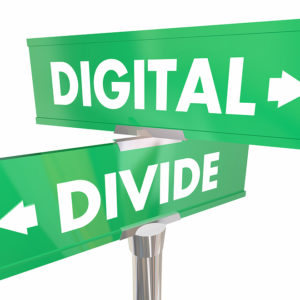“Google it” was Vice President Kamala Harris’ response when asked why COVID-19 testing wasn’t widely available in the United States. While that may seem like an obvious thing to do, the lack of high-speed internet in the U.S. prevents many Americans from accessing essential information about the COVID-19 pandemic or connecting virtually for school or work.
According to the Pew Research Center, nearly one in five teens in the U.S. cannot complete their homework because of the lack of access to high-speed internet. In addition, around 15 percent of all families with school-going children lack a high-speed internet connection.
While the U.S. is the wealthiest country globally, it ranks among the top 10 countries with the most expensive internet. On average, people spend about $61 per month on the internet, which is four times compared to South Korea and 40 percent more than users in France. Children living in areas with a lack of broadband have limited educational and economic opportunities in digitally isolated communities.
Furthermore, the pandemic has changed healthcare delivery in the U.S., forcing health systems to adapt to reduce in-person services and expand telehealth options. Broadband has become essential in connecting patients and healthcare providers, allowing virtual appointments to be held over real-time audio and video platforms with the help of smartphones, tablets, and computers. Efforts to increase broadband connection and help educate patients about technologies can greatly improve healthcare efficiency and accessibility.
Rural and underserved populations can benefit greatly from telehealth. In places where providers are scarce, having increased access to doctors for mental and behavioral health or medication management is not only convenient but can save lives. A combination of underdeveloped broadband infrastructure and low patient-to-doctor ratio in rural America has created healthcare deserts. In the U.S., 77 percent of rural counties have a shortage of healthcare professionals who provide primary care, dental, and mental health services.
Due to Coronavirus restrictions that limit in-person meetings with providers, Medicare has started to compensate for most online visits. Even insurers have waived copayments with hospitals, urging doctors to embrace telehealth and move appointments online.
The pandemic has exacerbated the digital divide. During COVID-19, when all schools and universities were closed, South Korea’s transition to online education was smooth as it has one of the best I.T. infrastructures, and 99.5 percent of people have access to the internet. According to estimates, 51 million students do not have home broadband services. Schools are trying to bridge this digital gap by providing internet access for low-income students, while some families use Wi-Fi from school parking lots.
The biggest reason internet prices are so high in the U.S. is the lack of competition. Millions of people in the U.S. can access broadband through only a single provider. The federal government not treating broadband as a public utility has played a significant role in limiting access to the internet.
Millions of people living in the U.S. cannot afford the internet, even though the U.N. has declared it a human right. Nearly one in five U.S. households living on less than $30,000 are not online, and half of the non-broadband users say that high costs prevent them from subscribing. Blacks and Hispanic populations continue to remain behind their White counterparts in internet access rates. Black residents living in the rural South are nearly twice as likely as their White counterparts to lack high-speed internet. According to a study in 2009, the gap between White students and Black and Hispanic ones deprives the U.S. economy of $310 billion to $525 billion in a year.
Even the U.S.’s most economically prosperous states are failing to meet the broadband needs of their poorest residents. As the 6th largest economy in the world, boasting an annual GDP of $3 trillion, California is home to nearly 6 million students. However, the average cost for broadband at home including the router in Los Angeles is $59.83. But this fails to include activation and installation fees that often exceed $100. In California, 300,000 students remain without the high-speed internet connection needed to attend classes on zoom. Attendance has dropped, largely attributed to the fact that over 1.5 million students lacked access to reliable internet at the start of the pandemic.
Overall, developing the necessary infrastructure to make high-speed internet available cheaply would cost billions, but the costs of failing to address the digital divide and improve internet accessibility would be devastating.

